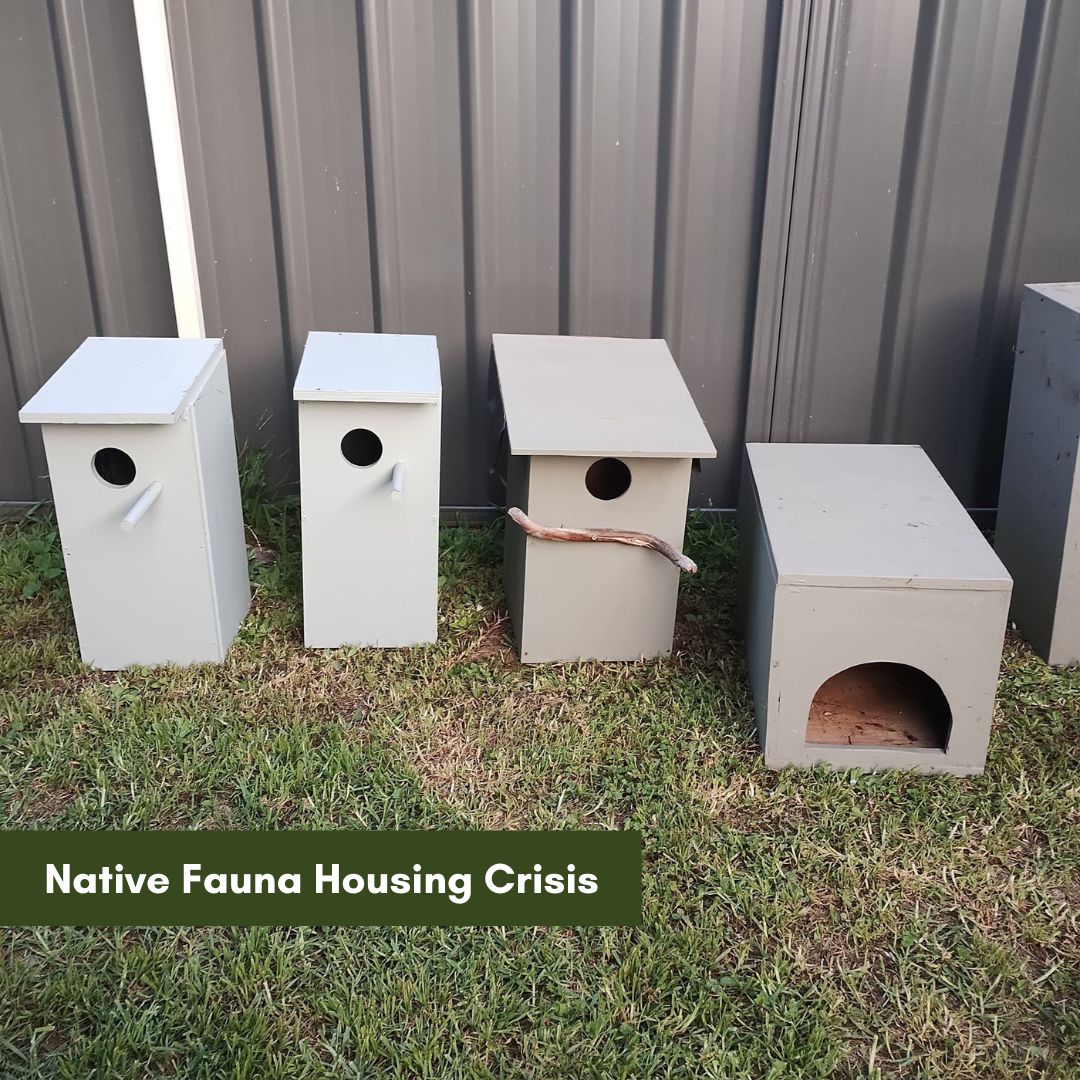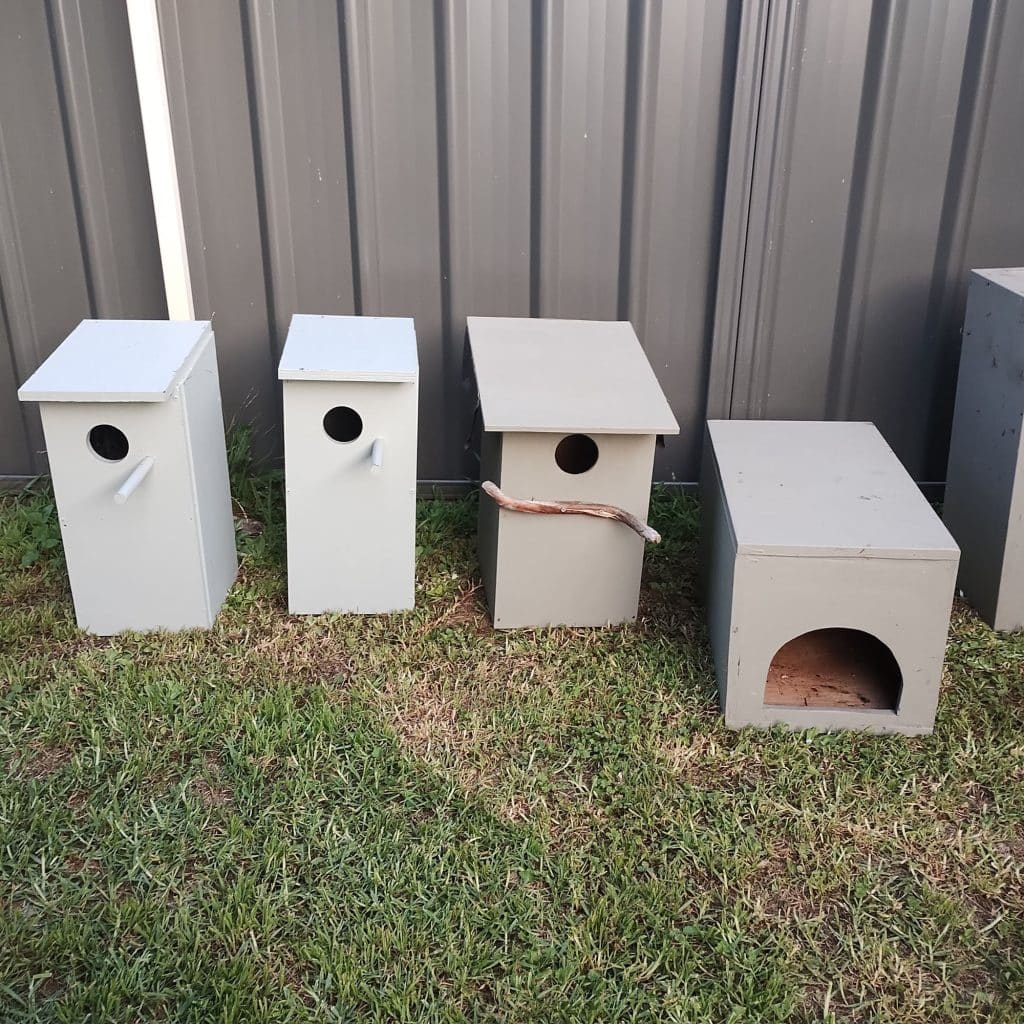Limited number of nest boxes available to good homes for Landcare members.
We know that nest boxes are not as good as the real thing – You can’t beat what nature offers in a mature ecosystem, a nice variety of hollows in different shapes and sizes. But we can help with the shortage in the short term, while nature works its magic.
A generous community member has donated a range of nestboxes to HRLN and we would like to pass them along to members that can put them to good use.
If you feel that you have the perfect site in which to install to help ease the housing crisis, please email lowerhunterlandcare@gmail.com.
To highlight the need for more housing for our native fauna, read this article from Amy Trello:
We drive our comfortable hollow cars to our functional hollow offices and back to our insulated and more efficient hollow homes. We go out to a cozy hollow restaurant and collect our shopping from busy hollow centres or watch a movie in a dark hollow theatre. Are we as reliant on hollows as other animals? So, what goes into a hollow?
Australia has over 300 native species that rely on tree hollows to fit their lifestyle. Hollows are homes, a place for social gatherings, a place for protection and insulation from heat, cold, rain and wind and a source of food. Various mammals, reptiles, frogs, birds, and insects need hollows as a home just like us. Just like us different species have different requirements for where they reside. Hollow dwelling creatures rely on tree hollows whether it is ground floor or a high rise. Echidnas, bandicoots and lizards like hollows and dead woody branching on the ground amongst the leaf litter and shrubs while others prefer hollows in trees overlooking the Lake, creeks and hills around. Hollow dwelling creatures even have requirements and preferences for how big or small their entrance holes are, at what diameter and height the tree is at the entrance hole, how wide or deep the hollow is on the inside and what aspect or direction the hollow is facing. For instance, Feather Tail Glider families need several hollows to live and socialise in. Their entry holes into live and dead trees need to be about 25mm. This allows for them to access it and keep them safe. Microbats can crawl in and out of a sliver in a tree which may open into a larger hollow. They prefer an N-NW aspect on a tree as this helps them increase their body temperature before they fly at night.
Tree hollows generally take more than 100 years to form. We can’t throw one away and quickly get another one. Whether the tree is alive, senescing (slowly dying back) or dead it is important to preserve maturing and mature trees and their root systems. Mature trees can have multiple well-formed hollows and still be sound and in good health. When trees are removed regardless of having hollows or not; it puts pressure on the inhabitants to find other places to go. I’d imagine we all know of someone or have heard of someone feeling the pressure of finding a place to live. The same goes for all creatures that depend on hollows. With the loss of trees on public and private land, it puts pressure on where these creatures will live, socialise and thrive next.
Story credit: Amy Trello, Arborist and Landcare Volunteer Support Officer for Lake Macquarie City Council.


